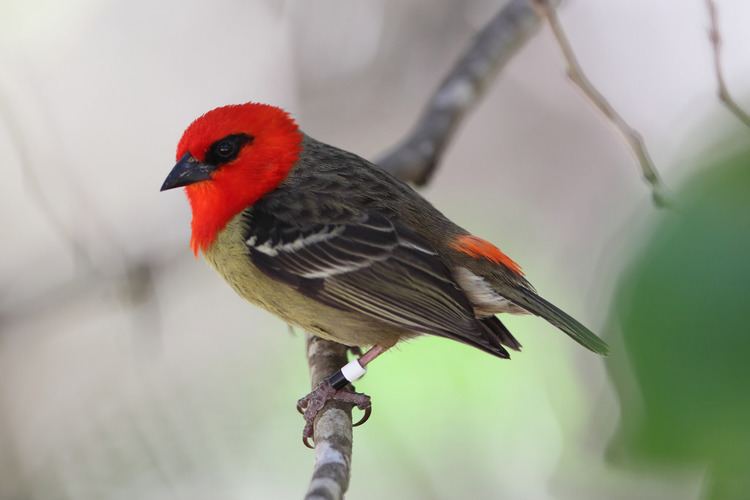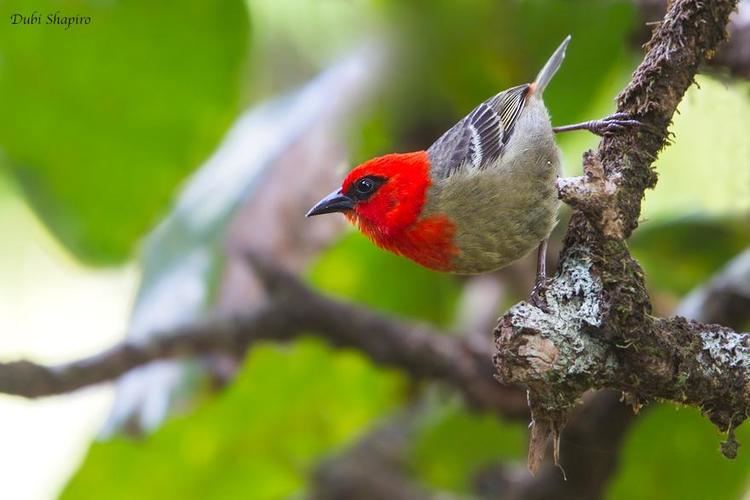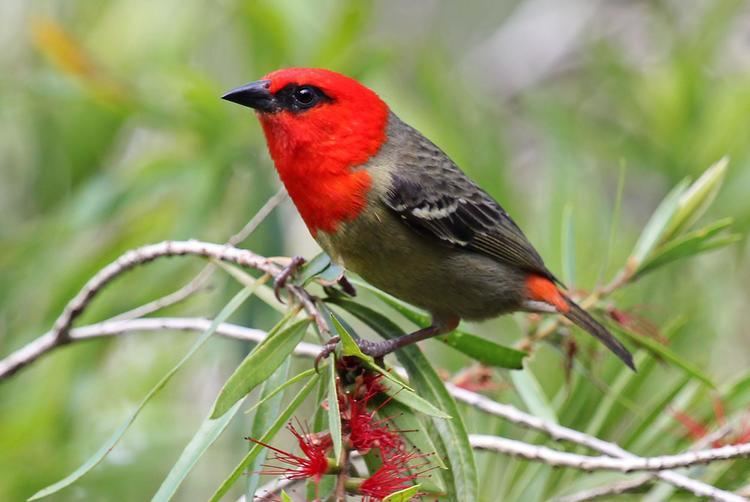Order Passeriformes Genus Foudia Higher classification Fody | Phylum Chordata Scientific name Foudia rubra Rank Species | |
Similar Bird, Fody, Passerine, Weavers, Rodrigues fody | ||
The Mauritius fody (Foudia rubra) is a rare species of bird in the weaver family. It is endemic to the island of Mauritius. It is classified by BirdLife International as being endangered. It is also on the United States' Endangered Species List with an endangered status.

This bird is 14 centimeters long. Breeding males are olive brown with a red head, breast and rump patch and black lores. While females, non-breeding males and juveniles are olive brown with white wing bars and a brown bill.

The bird lives in several types of forest, including degraded areas, as well as plantations. Stands of Japanese cedar (Cryptomeria japonica) have replaced native vegetation and now provide protection against predators. It feeds on insects like grasshoppers, beetle larvae, caterpillars, and also spiders. Berries are eaten regularly by some individuals. It feeds on nectar regularly, using its specialised brush-tipped tongue.

The bird is a weaver, the male and female cooperating to weave each nest, from material like grass, moss and small twigs.

The Mauritius fody is threatened by the loss of its habitat and predation from introduced predators. Beginning in the 1970s much of its habitat was lost when the land was cleared for plantations. By 2001 there were perhaps no more than about 100 breeding pairs. Nests are raided by predators, especially the black rat (Rattus rattus) and the crab-eating macaque (Macaca fascicularis). This is currently the main cause of the bird's decline. Some areas of intact habitat have high nest predation, but areas of low nest predation may be poor habitat. The common myna has also been observed preying on nests. Nest failure may occur when it is infested with tropical nest fly. The larvae of the fly attack the chicks, latching on and feeding on their blood, causing dehydration and anemia in the chicks.

Conservation efforts include the control of rats and macaques. A captive breeding program carried out by the Mauritan Wildlife Foundation has produced many chicks. Eggs are removed from nests in the wild and hatched in captivity as the wild pairs produce and rear another clutch simultaneously. Nests are treated for tropical nest fly. Supplemental food and water are given. The population has increased recently due to conservation programs establishing sub-populations on offshore islands. Due to these conservation efforts the species was downlisted from critically endangered to endangered in 2009.

Île aux Aigrettes, an islet off the main island of Mauritius, is now home to a number of Mauritius fodies and other threatened species that have been translocated there.
